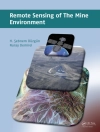This book presents the first comprehensive history of innovation at NASA, bringing together experts in the field to illuminate how public-private and international partnerships have fueled new ways of exploring space since the beginning of space travel itself. Twelve case studies trace the messy, risky history of such partnerships, exploring the role of AT&T in the early development of satellite technology, the connections between the Apollo program and Silicon Valley, the rise of Space X, and more. Some of these projects have succeeded, and some have failed; all have challenged conventional methods of doing the public’s business in space. Together, these essays offer new insights into how innovation happens, with invaluable lessons for policymakers, investors, economists, and members of the space community.
Inhoudsopgave
1. Introduction: Partnerships for Innovation.- 2. The Origins and Flagship Project of NASA’s International Program—The Ariel Case Study.- 3. Global Instantaneous Telecommunications and the Development of Satellite Technology.- 4. The Other Side of Moore’s Law—The Apollo Guidance Computer, the Integrated Circuit, and the Mircoelectronics Revolution, 1962–1975.- 5. NASA’s Mission Control Center—The Space Program’s Capitol as Innovative Capital.- 6. Lessons of Landsat—From Experimental Program to Commercial Land Imaging, 1969–1989.- 7. Selling the Space Shuttle—Early Developments.- 8. Something Borrowed, Something Blue—Re-purposing NASA’s Spacecraft.- 9. Encouraging New Space Firms.- 10. The Discovery Program—Competition, Innovation, and Risk in Planetary Exploration.- 11. Partnerships for Innovation—The X-33/Venture Star.- 12. Microgravity, Macro Investment—Overcoming International Space Station Utilization Challenges through Managerial Innovation.- 12. NASA, Industry, and the Commercial Crew Development Program—The Politics of Partnership.- 13. Conclusion—What Matters?
Over de auteur
Roger D. Launius has written or edited more than thirty books on aerospace history, most recently
Historical Analogs for the Stimulation of Space Commerce (2014), and
Space Shuttle Legacy: How We Did It and What We Learned (2013).
Howard E. Mc Curdy is Professor in the School of Public Affairs at American University, USA. He is the author of numerous works on the national space program, including
Inside NASA (1993),
Faster, Better, Cheaper (2001), and
Space and the American Imagination (rev. ed. 2011).












